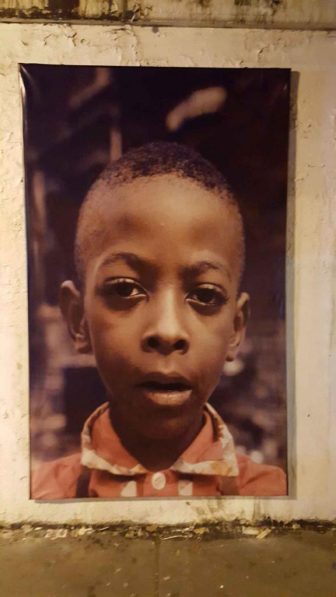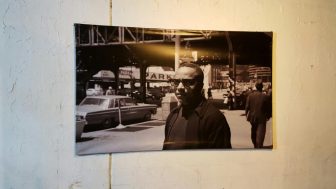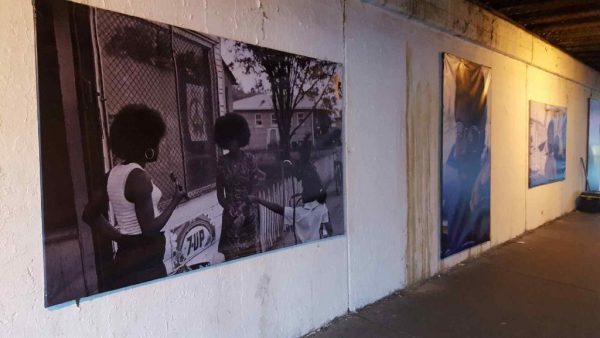A recent cold, gloomy afternoon suddenly became “a lot easier” when Austin fabricator Keith Brownlee, who was busy installing photographs under a vacant tunnel in Austin, received unexpected gratitude from a number of passers-by – including one young man.
“He’s like, ‘Don’t worry, man. We’ve gotta make sure that nobody touches these arts,’” Brownlee said, recounting the conversation that occurred under the Laramie and Kinzie viaduct, which has turned a deteriorated wall into a photo gallery.
The man, who Brownlee believed to be associated with local gang, proceeded to tell him how nice it was to “see some arts in Austin like in Oak Park” and how he had explained every image to his child as they went across the street.
Brownlee did not expect enthusiastic feedback like this, but it made the installation work a lot more fun, he said.
“The most interesting thing is how many people would come by and be like, ‘Oh, we love this,’” said Brownlee, 49, who grew up in Austin and installs art works in museums and galleries across the city.
“There were so many people driving by, honking their horns,” he said. “They were saying thank you and giving us thumbs up.”
It was the first time that Brownlee had installed public art in Austin. And among all the art forms, the longtime photographer wanted to give Austin “something new.”

Photo by Takeya Ochiai
“It was to give people in the Austin community a sense of what an art gallery looks like, even if it’s in a bridge,” he said.
“We are hoping that they can remember better times here and relate to them when they get off the train,” he said.
The wall of photography, which will be permanently on display under the Laramie Green Line viaduct, is part of the 50 x 50 Neighborhoods Arts Project, whose goal is to bring more banners, murals and sculptures in all of Chicago’s 77 communities.
The gallery, which is funded by part of Ald. Emma Mitts’ (37th) menu money and the city of Chicago, features 12 street photographs taken by Creightney, who opened Chicago’s first black-owned photography studio in the 1970’s.
The photos include colored portraits and black-and-white landscapes, which are hand-picked by Stokes, who manages her father’s archive with other family members.
“These images show regular people doing regular things, but it’s real,” Stokes said. “I just wanted people to be reminded of who they are and where they come from.”
And she wants people to “not be so much caught up in all the negative narrative that Austin gets all the time.”
It didn’t take long for the positive reactions to start.
A couple thanked Stokes while she helped Brownlee with the installation.
“They were extremely happy, and they hugged me,” Stokes said.
“It’s important to help more people understand that Austin does have a lot of beauty,” she said. “We just have to look for it.”

Photo by Takeya Ochiai
Stokes had had several locations in mind to put up the photos. She decided that the Laramie and Kinzie intersection would generate the most impact, as it’s not only a traffic hot spot but also serves as a hub for community events, she said.
While one side of the viaduct has vibrant organizations like the By The Hand Club, the other side had a “stinginess of life,” said Stokes, who’s project coordinator at Austin Coming Together.
“It’s kind of drab and dreary underneath of that train tunnel; it needed something,” she said. “We thought it would be a really great place to get people to see something different within the community.”
With Brownlee’s fabrication skills and creative mind, they were able to make frames out of conduits and customize clips that fit the images, which makes the photo stand out and look like they’re in a gallery.
“Keith was really instrumental in being able to help us with the vision that we saw,” Stoke said. “We are on the right track of really doing something in the community that’s never been done before.”
It took months of planning, budgeting and designing before the gallery came into being, Stoke said, adding “in the end it’s so worth it.”
“People driving by were rolling their windows down and saying, ‘This is great. If that’s all of the feedback that I get, I would just be happy with that.”
